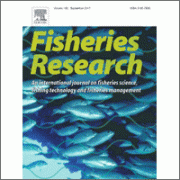Best practices for catch-and-release recreational fisheries – angling tools and tactics
AUTHOR(S): Jacob W. Brownscombe, Andy J. Danylchuk, Jacqueline M. Chapman, Lee F.G. Gutowsky, Steven J. Cooke
CITATION:
Brownscombe J.W., A.J. Danylchuk, J.M. Chapman, L.F.G. Gutowsky and S.J. Cooke. 2017. Best practices for catch-and-release recreational fisheries – angling tools and tactics. Fisheries Research 186(3):693–705. https://doi.org/10.1016/j.fishres.2016.04.018
ABSTRACT:
Catch-and-release angling is an increasingly popular conservation strategy employed by anglers voluntarily or to comply with management regulations, but associated injuries, stress and behavioural impairment can cause post-release mortality or fitness impairments. Because the fate of released fish is primarily determined by angler behaviour, employing ‘best angling practices’ is critical for sustainable recreational fisheries. While basic tenants of best practices are well established, anglers employ a diversity of tactics for a range of fish species, thus it is important to balance science-based best practices with the realities of dynamic angler behaviour. Here we describe how certain tools and tactics can be integrated into recreational fishing practices to marry best angling practices with the realities of angling. While the effects of angling practices vary considerably across contexts and conditions, we also outline available methods for assessing fish condition by examining physical injuries and reflexes, which enable recreational anglers to make educated real-time decisions related to angling practices, as well as when, where, and whether to release captured fish based on their probability of survival. In cases where fish are in poor condition, there are recovery tactics available that can improve survival, although this is among the most understudied aspects of angling practices.
FULL TEXT – Brownscombe et al.



